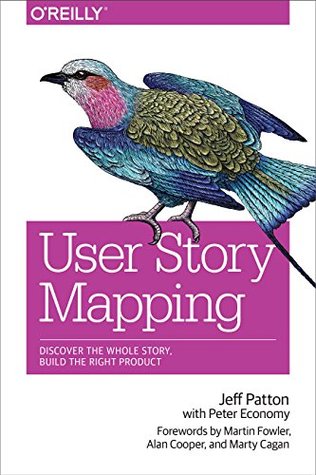More on this book
Community
Kindle Notes & Highlights
by
Jeff Patton
Read between
November 25 - December 4, 2018
Slice out a development strategy. If you’ve sliced away everything you don’t need to deliver, you’ll be left with what you do need. Now slice your minimum viable solution into the parts you’d like to build earlier and later. Focus on building things early that ...
This highlight has been truncated due to consecutive passage length restrictions.
On the day of the workshop, we typically start with a product vision exercise such as the well-known Elevator Pitch or the Cover Story[8] format where the team describes what they would like to read about their product in a trade journal article a year from now. This shows whether the team has a common understanding about
The next step is to look at the typical users of the product. If the workshop goal is to specify a detailed backlog, the user roles or personas should result from the user research phase. If the project is in an early phase, the team writes down their assumptions. These can then be tested in user research phases. This has proven to be a good way to prepare the user research. This is also an aspect where design thinking practices and user story mapping work very well together.
We next use a three-tier approach to defining user stories: (1) starting with high-level usage steps, these are broken down into (2) finer activities per user role, which in turn are broken down into (3) concrete user stories in the format “as <role>, I want <functionality>, so that <value
Stories get their name from how they’re supposed to be used, not from what you’re trying to write down.
So the idea is telling, and you know you’re doing it right if you’re generating energy, interest, and vision in the listener’s mind. That’s big. And it sounds a lot more fun than reading a typical requirements document.[
If you’re not getting together to have rich discussions about your stories, then you’re not really using stories.
As a [type of user] I want to [do something] So that I can [get some benefit]
Use the simple story template to start conversations.
“As a band manager, I want to upload an image so that I can customize my promo flyer.”
Really talk about who Please don’t just talk about “the user.”
Really talk about what
Really talk about why
Talk about what’s going on outside the software
Talk about what goes wrong
Talk about questions and assumptions
Talk about better solutions
Talk about how
Talk about how long
There are many different kinds of conversations with different people for every story.
have some bad news for you here. You’re likely to find things you believe should change about what you’ve done. It’ll help everyone’s sanity to separate out two concerns. First: did we build what we agreed to build? And then: if it’s what we agreed to build, now that we see it, should we make some changes?
Who the customers and users are you believe will use your solution How they meet their needs today without your solution How the world would change for them with your solution How your solution might look and behave How long your solution might take to build
product manager to identify a product that’s valuable, usable, and feasible. When
Journey Mapping and Concept Generation Ben Crothers, Atlassian Given that we offer over 10 different products, we have to make sure that we design, build, and improve upon those products in ways that match how our customers use them together, not one by one. As part of a project to discover how the products could work together in a better way, we formed a multidisciplinary team to map the entire end-to-end customer experience in finding, evaluating, purchasing, and using them, as well as getting help and adding more products and services. This was huge. To help break it down, we mapped the
...more
This highlight has been truncated due to consecutive passage length restrictions.
What problems are we really solving? What solutions could be valuable to our organization and to customers buying or adopting the product? What does a usable solution look like? What’s feasible to build given the time and tools that we have?
Sketch simple personas I like creating simple persona sketches with a small discovery team to build shared understanding of my users. A persona is an example of your target user assembled from the facts and sometimes the assumptions you have about your users. Building personas helps us look at the software through the eyes of our users. Personas are handy tools.


